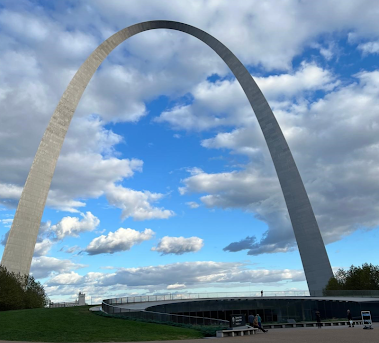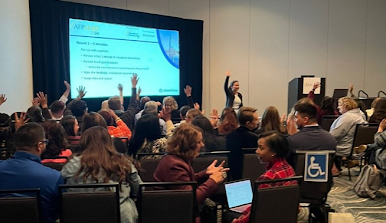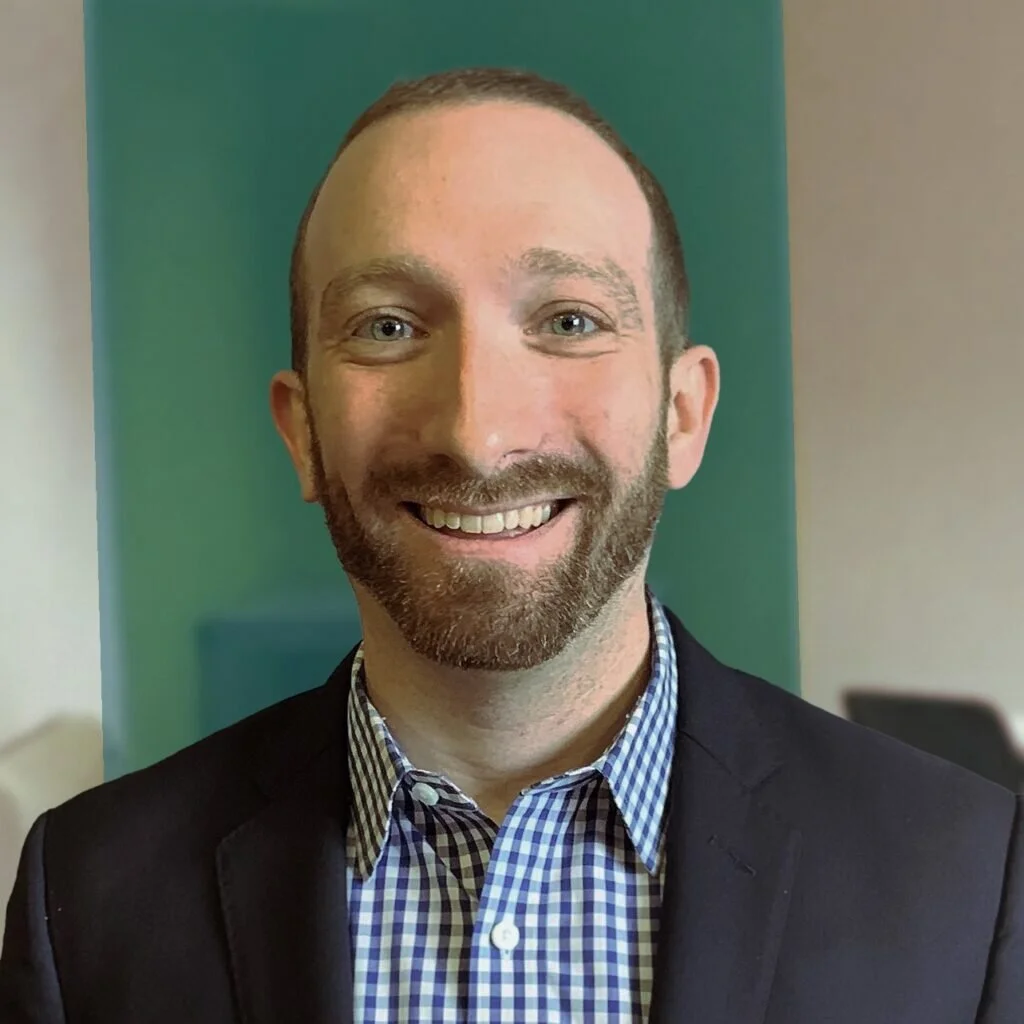Lessons in Leadership: Key Takeaways from AFP LEAD 2024
Senior Consultant Jaron Bernstein discusses his insights, key takeaways and favorite moments from the AFP LEAD 2024 conference.
What is AFP LEAD?
I was privileged to attend the Association of Fundraising Professionals’ LEAD conference for the first time this year in St. Louis, Missouri, from October 16-18, 2024. Unlike AFP’s other fundraising-focused conferences and gatherings, LEAD is focused on developing leadership skills within the fundraising community through education sessions focused on leadership development, diversity, equity and inclusion, people management skills, and other nonprofit leadership topics.
As a first-time attendee, I was excited. I had always heard from colleagues about the depth of the session topics, the enthusiasm of the attendees, and the value of the experience towards enhancing leadership skills and organizational impact – and I was not disappointed!
What I love about AFP LEAD
Attending professional conferences offers invaluable support, especially for nonprofit professionals who are often burdened by day-to-day demands. These events offer growth opportunities to build skills, learn from peers and expand networks with those who have faced similar challenges.
I found LEAD to be especially inspiring, not only because of the wide range of unique and engaging sessions, but also the nearly 450 attendees from across North America who came eager to learn, grow and envision a better future for our sector.
As a nonprofit consultant, I often find myself in the role of cheerleader and coach for nonprofit teams who work to make the world a better place. It is rewarding to be in a room alongside these leaders, witnessing the sharing of knowledge, solidarity and the collective commitment to change.

Lesson #1: Cultivating who you are as a leader takes care and consistency
The first among many lessons comes from the session led by my colleague Anh Vo, Alford Group’s Chief Culture Officer. In her session “Developing Your Signature Leadership Brand,” Anh guided participants through the beginning stages of developing our own personal brands by having us jot down what we felt it was important for others to know about:
- our personal background
- our personal or professional accomplishments
- what we aspire to achieve personally or professionally
- the environment we thrive in
Spoiler: this kind of work is important because if you don’t define yourself, others will do it for you based on their own biases and preconceptions!
After a few minutes of brainstorming, we practiced. In a series of brief partnered conversations (only about 1 minute each), we shared our stories and got feedback about what stood out to them, what made them say “WOW!” The exercise of practicing in these intentionally short intervals forced us to be concise and, with our partner’s feedback, filter down to the most important aspects of who we are and what “our brand” should be.
The energy in the room was electric and it was apparent that the participants, myself included, came away from the session with a clear path forward towards carefully and consistently cultivating a personal brand over time!

An electrified crowd at Developing Your Signature Leadership Brand led by Anh Vo
Lesson #2: We can change, together.
Another highlight for me was Olu Burrell’s session entitled “Casting Your Vision: Leading Your Organization through Change.” Olu is an incredibly compelling presenter; someone who has a million relevant quotes and book recommendations at his fingertips! I highly recommend you check him and his work out.
His session was focused on change management, particularly John Kotter’s 8-Steps for Leading Change Model, which Alford Group actively bases many of its services on! In addition to explaining the basics of Kotter’s model, Olu sprinkled his presentation with a myriad of truly inspiring and quotable nuggets about the need for intentional change management processes, for example:
“We humans have paleolithic brains, medieval institutions and god-like technology; the latter means we expect things to change quickly but the former prevents that,”
“If people can’t see themselves in your vision for change, they will revert to their primitive, defensive brains,”
“People will be resistant to change if they feel like it is happening to them not with them.”
Olu imparted that in volatile, uncertain, complex or ambiguous times, followers want trust, compassion, stability, and hope from their leaders. Identifying and adhering to a strong change management process in these times can lay the foundation for instilling these elements in your team.
In a session full of memorable moments, the idea that most resonated with me was that “change is like bamboo.” Most people know that Chinese Bamboo is the fastest growing plant in the world. What many don’t know, however, is that it can take 5 years after germination for a bamboo shoot to break the surface of the soil. That’s 5 years after planting until you know if the bamboo plant will even grow or if it can be harvested.
Applying this analogy to change, we see that often we want the abundant growth in six weeks, without recognizing that it can take 5 years to get there. We also tend to assume that if we can’t see immediate results, the change isn’t taking root and we pivot away from it before it has a chance to break the surface of the soil (this is especially true of diversity, equity and inclusion efforts).
Part of good change management is creating a process that helps everyone involved understand the vision for change, how we will get there, and how long it will take until a change replaces old habits.
Lesson #3: DEI is a well-being strategy.
The conference concluded with a closing keynote presentation from Tanya M. Odom entitled “Skillfully Navigating the Evolving Inclusion, Diversity, Equity and Access (IDEA) Landscape with Intention and Purpose.”
In her speech, Tanya summarized the history of IDEA work over the last 4 years, reminding us of the importance of context. She invited input from the audience on the fact that there’s a lot going on in our world right now, and that all of us are trying to be informed and engaged in this work while also avoiding overwhelm and burnout. In fact, I learned from Tanya that the World Health Organization has designated burnout from work as a disease since 2019!
In this environment, and especially as IDEA efforts are facing backlash in recent years from the public, companies and even governments, it can be hard to stay optimistic, hopeful and focused on making positive change. Rather than being discouraged, Tanya invited us to ask ourselves the following questions:
- Have we created an environment of psychological safety at our workplaces in which creativity can flourish?
- How can each individual at our organization benefit from our organization’s diversity and how well have we communicated that?
- Are there ways to create space for the diversity of our organization to help with problem solving?
- Do all members of our organization feel that inclusion, diversity, equity and access is relevant/connected to them?
Despite the shifts in current events, changes in terminology and perceived backlash, 6 in 10 professionals support diversity, equity and inclusion efforts in their workplace according to Inc. Magazine.
In the words of John A. Powell of the Haas Institute, “We are either bridging or breaking connection. Bridging builds empathy, belonging and inclusion; breaking leads to fear, anxiety and othering.” I left the keynote even more determined to make sure I am creating bridges in every interaction I have personally and professionally.
Conclusion
As you may have gathered if you’ve read this far (thank you!), my LEAD experience was full of memorable discussions, thought-provoking reflections and invigorating conversations with colleagues old and new. While I am walking away from the conference with so many specific ideas to ruminate on, I think my experience can be summed up fairly accurately with a quote from a session on authentic leadership:
“Good leaders aren’t looking for followers, they are looking to inspire others to lead.”
As I take the next steps in my own leadership journey, I hope to find ways to inspire others just as I have been inspired by my time at LEAD this year.


